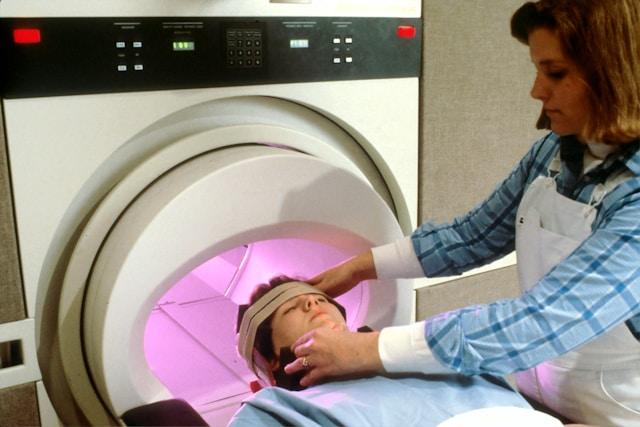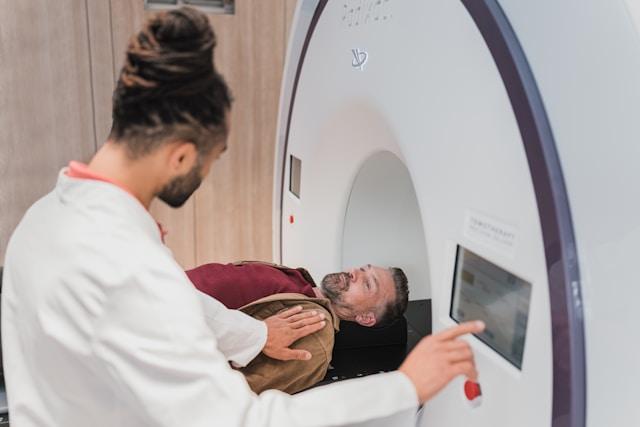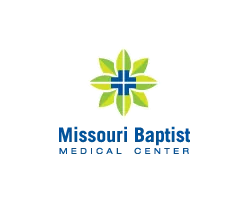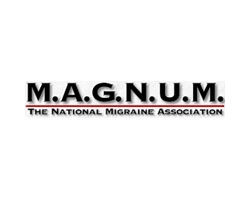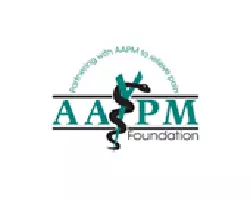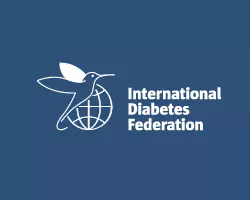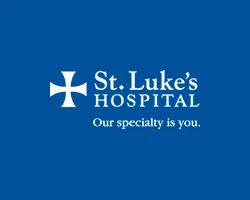-
PMPS: Understanding & Managing Post Mastectomy Pain
Post mastectomy pain (PMPS) and pain after chest surgery can significantly impact individuals’ quality of life, especially women and people, affecting their performance. Dealing with persistent pain in the chest area following these procedures is a common challenge that many patients face. Understanding the causes, symptoms, and available treatment options for PMPS is crucial for managing this condition effectively.
Key Takeaways
-
Understand the information about what Post Mastectomy Pain Syndrome (PMPS) is and how it differs from pain after chest surgery.
-
Recognize the symptoms of PMPS to seek appropriate treatment early.
-
PMPS can affect anyone, including women and people, who has undergone mastectomy surgery, regardless of the type of surgery or cancer stage.
-
Early identification of PMPS symptoms is crucial for timely intervention and pain management.
-
Explore various treatment strategies for PMPS, including medication, physical therapy, and psychological support.
-
Implement home-based pain management techniques like gentle exercises, heat therapy, and relaxation techniques.
Defining PMPS
Core Concepts
Post mastectomy pain syndrome (PMPS) refers to persistent pain experienced after breast cancer surgery. It can include sensory changes and discomfort in the chest area for people. Understanding PMPS is crucial for effective pain management strategies.
The impact of PMPS on breast cancer survivors’ quality of life is significant. Chronic pain can lead to physical limitations, emotional distress, and reduced overall well-being. Addressing PMPS is essential for enhancing survivors’ recovery process.
It is vital to comprehend pain management strategies for chest surgery patients to alleviate post-operative discomfort. Proper pain control can enhance patient satisfaction and promote faster healing processes following surgery.
Causes
The development of post mastectomy pain syndrome can stem from various factors such as nerve damage, tissue scarring, or inflammation. Surgical procedures may inadvertently injure nerves, leading to persistent pain sensations.
Factors contributing to pain after chest surgery include surgical trauma, nerve compression, and tissue damage. The body’s response to surgery can trigger inflammatory processes that result in prolonged discomfort post-surgery.
Nerve damage during chest surgery can result in chronic pain due to altered nerve signaling and processing. Understanding how nerves are affected during surgical interventions is crucial for managing post-operative discomfort effectively.
Risk Factors
Risk factors for developing PMPS may include the extent of surgery, radiation therapy, or pre-existing conditions like diabetes. Individuals with a history of acute pain experiences may be more prone to developing chronic post-surgical discomfort.
Variables that increase the likelihood of experiencing pain after chest surgery include age, overall health status, and the complexity of the surgical procedure. Older patients or those with underlying health issues may have a higher risk of prolonged post-operative pain.
Individual characteristics such as genetics, psychological factors, and pain perception thresholds can influence the risk of persistent pain post-surgery. Personalized approaches to pain management based on these factors can improve outcomes for patients.
Symptoms Overview
Common Signs
-
Persistent discomfort: Patients may experience ongoing pain in the chest area post-mastectomy.
-
Numbness and tingling: Sensations of numbness or tingling around the surgical site are common.
-
Limited range of motion: Difficulty in moving the arms or shoulders due to pain or stiffness.
-
Emotional distress: Anxiety, depression, and frustration are often associated with post-mastectomy pain syndrome (PMPS).
Recognizing these signs is crucial for timely intervention and management. Patients should communicate openly with healthcare providers about their symptoms to receive appropriate care.
Pain Characteristics
-
Chronic pain in PMPS patients is often described as burning, stabbing, or aching.
-
The intensity of pain after chest surgery can vary from mild to severe, impacting daily activities.
-
Different surgeries like mastectomy, thoracotomy, or cardiac procedures result in diverse pain experiences.
-
Understanding the characteristics such as location, quality, and triggers of pain helps tailor treatment plans effectively.
Comparing PMPS and Chest Surgery Pain
Similarities
Post mastectomy pain syndrome (PMPS) and pain after chest surgery share similarities in their experiences. Both conditions often involve chronic and persistent pain that can significantly impact a person’s quality of life. The treatment approaches for managing post-operative pain in both cases also exhibit commonalities. Healthcare providers frequently use a combination of medications, physical therapy, and psychological support to help patients cope with the discomfort.
Moreover, the shared pain characteristics between PMPS and chest surgery pain enable healthcare providers to develop tailored treatment plans. Understanding the overlapping symptoms allows medical professionals to address the underlying causes effectively. By acknowledging these similarities, healthcare teams can provide more effective and comprehensive care for individuals experiencing post-operative pain.
Differences
Despite their similarities, there are notable differences between PMPS and pain after chest surgery. One key aspect that sets them apart is the unique characteristics of PMPS, which include nerve damage or irritation following mastectomy procedures. In contrast, pain after chest surgery may result from various factors such as surgical incisions, tissue trauma, or nerve compression.
The intensity and location of pain differ between these two conditions. Patients with PMPS often report experiencing shooting or burning sensations in the chest area or along the surgical site. On the other hand, individuals dealing with general post-surgery pain may describe discomfort that varies in intensity and location depending on the type of procedure undergone.
Recognizing these differences is crucial for developing personalized pain management strategies. Healthcare providers must tailor their treatment plans based on the specific symptoms and challenges faced by each patient. By understanding the nuances of PMPS and chest surgery pain, medical teams can offer targeted interventions that address individual needs effectively.
Who Gets PMPS?
Demographics
Demographic factors play a crucial role in determining the prevalence of PMPS. Research indicates that age is a significant factor, with older individuals more prone to experiencing persistent pain after chest surgery. gender differences have been observed, with some studies suggesting that women may be at a higher risk of developing chronic post-mastectomy pain. Considering these demographic variables is essential in understanding and addressing the unique needs of patients suffering from post-surgical pain.
-
Age and gender are key demographic variables influencing PMPS prevalence.
-
Older individuals are more susceptible to persistent post-operative pain.
-
Women may have a higher risk of developing chronic pain after chest surgery.
Surgery Types
Various types of surgeries can result in PMPS or post-operative pain, including mastectomies, thoracotomies, and other chest procedures. The nature of the surgery plays a critical role in determining the likelihood and severity of chronic pain experienced by patients. For instance, more invasive procedures involving nerve damage or tissue removal may lead to higher rates of persistent pain. Understanding the specific surgical techniques used is vital for healthcare providers to tailor effective pain management strategies for each patient.
-
Mastectomies, thoracotomies, and chest surgeries can all contribute to PMPS.
-
The invasiveness and extent of tissue damage during surgery impact chronic pain.
-
Tailoring pain management approaches based on surgical specifics enhances effectiveness.
Identifying Symptoms
Physical Symptoms
Post mastectomy pain syndrome (PMPS) manifests as persistent pain in the chest wall, armpit, and arm following breast surgery. Patients may experience numbness, tingling, or shooting pain in the affected areas. The severity of symptoms can vary significantly among individuals.
Physical symptoms after chest surgery depend on the specific procedure performed. For instance, patients undergoing a mastectomy may encounter limited range of motion in the shoulder on the affected side. In contrast, those who have had a thoracotomy might experience breathing difficulties and chest tightness.
Monitoring physical symptoms is crucial for identifying any complications post-surgery. Addressing these symptoms promptly can aid in enhancing recovery and preventing long-term issues. It is essential to communicate openly with healthcare providers about any discomfort or changes experienced.
Emotional Impact
Living with chronic pain from PMPS can take a significant emotional toll on individuals. Patients may struggle with feelings of frustration, helplessness, and anxiety due to ongoing pain. The constant battle with discomfort can lead to decreased quality of life and impact daily activities.
Experiencing pain after chest surgery can have profound psychological effects, including depression and mood disturbances. Patients may feel overwhelmed by the challenges of managing both physical and emotional well-being simultaneously. It is vital for healthcare professionals to address these emotional aspects alongside physical symptoms.
Addressing emotional well-being is crucial for overall recovery and quality of life. Providing psychological support, counseling services, and access to support groups can help patients cope with the emotional burden of chronic pain post-surgery.
Treatment Strategies
Medical Interventions
Medical interventions for post mastectomy pain (PMPS) and pain after chest surgery primarily focus on multimodal approaches. These strategies combine various techniques to effectively manage pain and improve patient outcomes. Pharmacological treatments, such as analgesics, anti-inflammatory medications, and nerve pain medications, play a crucial role in alleviating discomfort post-surgery. On the other hand, non-pharmacological approaches, including physical therapy, acupuncture, and psychological interventions, are also essential components of comprehensive pain management plans.
In recent years, there have been significant advancements in medical interventions aimed at enhancing post-surgical pain outcomes. Targeted drug therapies that specifically address neuropathic pain associated with PMPS have shown promising results. minimally invasive procedures, such as nerve blocks and radiofrequency ablation, offer effective pain relief with fewer risks and complications compared to traditional surgical interventions.
Physical Therapy
Physical therapy plays a vital role in the rehabilitation process for individuals experiencing PMPS or pain after chest surgery. Through targeted exercises and manual techniques, physical therapists help patients regain strength, flexibility, and function in the affected areas. Tailored exercise programs can improve range of motion in the chest and shoulder region while reducing stiffness and discomfort.
Incorporating physical therapy into post-operative care plans offers numerous benefits for patients recovering from chest surgery. Improved muscle strength and endurance can enhance overall functional abilities and quality of life. Physical therapy also aids in restoring proper posture and body mechanics, which are essential for preventing long-term musculoskeletal issues related to surgical procedures.
Alternative Therapies
Alternative therapies serve as valuable complements to traditional treatments for PMPS and post-surgical pain management. Modalities like acupuncture, massage therapy, and chiropractic care can provide additional relief from persistent discomfort. These alternative approaches work synergistically with conventional medical interventions to address both the physical and emotional aspects of chronic pain.
The effectiveness of alternative therapies in managing post-surgical pain has gained recognition within the healthcare community. Integrating methods like mindfulness meditation or yoga into treatment plans can promote relaxation, reduce stress levels, and improve overall well-being for patients recovering from chest surgery. By embracing a holistic approach to pain management, individuals can experience comprehensive care that addresses their unique needs.
Managing Pain at Home
Lifestyle Adjustments
Living with post mastectomy pain (PMPS) or pain after chest surgery requires certain lifestyle adjustments. Engage in regular physical activity within your limits to improve circulation and reduce stiffness. Prioritize a balanced diet rich in fruits, vegetables, lean proteins, and whole grains.
Establishing a good sleep routine is crucial for managing pain; aim for 7-9 hours of quality sleep each night. Practice stress-reducing activities like meditation, deep breathing exercises, or yoga to alleviate PMPS symptoms. These lifestyle changes can significantly impact your pain levels and overall well-being.
Home Remedies
Simple home remedies can complement medical treatments for pain management. Applying cold packs to the affected area can help reduce inflammation and numb the pain. Warm baths or showers can also provide relief by relaxing muscles and easing discomfort.
Engage in gentle stretching exercises to improve flexibility and reduce muscle tension contributing to PMPS. Incorporate over-the-counter pain relievers like acetaminophen or ibuprofen as recommended by your healthcare provider. These self-care practices empower you to take an active role in managing post-operative pain effectively.
Professional Care Options
Specialists Involved
Healthcare providers involved in managing post mastectomy pain (PMPS) and pain after chest surgery include an interdisciplinary team. Surgeons play a crucial role in the initial surgical intervention and follow-up care. Pain management specialists focus on alleviating pain through various interventions.
Collaboration among oncologists, physical therapists, and psychologists is essential for comprehensive care. Each specialist contributes unique expertise to address different aspects of pain management and recovery. This multidisciplinary approach ensures holistic support for patients.
Treatment Plans
Comprehensive treatment plans for PMPS encompass various modalities such as medication, physical therapy, and psychological support. These plans are tailored to each patient’s specific needs, considering factors like pain severity and individual response to treatments.
Individualized treatment strategies are crucial for addressing the diverse nature of pain experiences after chest surgery. Tailoring interventions based on patients’ responses enhances effectiveness and improves overall outcomes. A personalized approach fosters better patient engagement and adherence to the treatment regimen.
Preventing PMPS
Pre-Surgery Tips
Prior to undergoing chest surgery, patients should actively engage in pre-surgery preparations to mitigate the risk of developing post mastectomy pain syndrome (PMPS). By maintaining a healthy lifestyle and following a balanced diet, individuals can enhance their overall physical well-being before the surgical procedure. Engaging in light exercises and practicing relaxation techniques can also help reduce stress levels, which may contribute to better pain management post-surgery.
Moreover, patients should communicate openly with their healthcare providers about any concerns or fears they may have regarding the surgical process. Establishing a strong support system consisting of family members, friends, or mental health professionals can significantly aid in coping with the emotional challenges associated with chest surgery. Implementing these pre-surgery tips not only prepares patients for potential post-operative pain but also contributes to a smoother recovery process.
Post-Surgery Care
After undergoing chest surgery and experiencing PMPS, it is crucial for individuals to adhere to comprehensive post-surgery care guidelines. This includes diligently following the prescribed medication regimen to manage pain effectively and prevent complications. Engaging in physical therapy sessions as recommended by healthcare providers can aid in restoring mobility and strength in the chest area, promoting faster healing.
Regular follow-up appointments with healthcare professionals are essential for monitoring pain levels and addressing any emerging issues promptly. Patients should actively participate in discussions about their pain management strategies during these follow-up visits to ensure personalized care that aligns with their specific needs. By prioritizing post-surgery care and staying committed to the recovery process, individuals can optimize long-term pain management outcomes and improve their overall quality of life.
Closing Thoughts
In understanding PMPS and post-chest surgery pain, you now have a comprehensive view of the symptoms, risk factors, treatment options, and preventive measures. By recognizing the nuances between these conditions, you are better equipped to identify potential signs early on and seek appropriate care promptly. Remember, proactive management is key to mitigating discomfort and enhancing your quality of life after surgery.
Empower yourself with the knowledge gained from this article to take charge of your health journey. Whether you’re currently experiencing PMPS or preparing for chest surgery, prioritize open communication with your healthcare provider, adhere to prescribed treatments, and explore various pain management techniques discussed here. Your proactive approach can make a significant difference in how you navigate post-surgery recovery and long-term well-being.
Frequently Asked Questions
What is PMPS (Post Mastectomy Pain Syndrome)?
PMPS, or Post Mastectomy Pain Syndrome, refers to chronic pain experienced in the chest, armpit, and arm following mastectomy surgery. It can persist for months or even years after the procedure.
How can PMPS symptoms be identified?
Symptoms of PMPS include persistent pain in the chest area, armpit, and arm, along with tingling sensations or numbness. These symptoms may impact daily activities and quality of life.
Who is at risk of developing PMPS?
Individuals who undergo mastectomy surgery are at risk of developing PMPS. Factors such as nerve damage during surgery, radiation therapy, and psychological factors can contribute to its development.
What are some treatment strategies for managing PMPS?
Treatment options for PMPS may include medications, physical therapy, nerve blocks, acupuncture, and psychological support. A multidisciplinary approach tailored to individual needs is often recommended for effective management.
How can one prevent the development of PMPS?
Preventive measures for PMPS include early pain management interventions post-surgery, proper wound care to minimize complications, regular follow-ups with healthcare providers, and maintaining a healthy lifestyle to support overall well-being.

